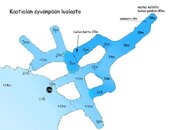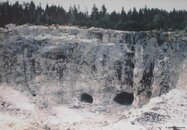First let me say how happy I am to hear that the OP has made a significant recovery and I hope they continue to improve. Also, thanks to the OP for posting this thread so that others can be more aware of environmental conditions that can affect various dive outcomes.
Now, I'm about as far from being a doctor as you can get, but this passage got my attention:
There were no rips anywhere, so most likely due to coldness my periferic blood flow had ended or blocked and that is why decompression did not happen. Nitrogen had been in my tissues and after started to bubble up. When my body got warmer and blood flowing the bubbles entered my lungs doing massive damage.
It sounds like he's saying that blood flow in his extremities had essentially slowed to such a point as to make nitrogen get "trapped" in this blood, almost the way ice cubes trap air when they freeze. Then, as he "thawed", it introduced the nitrogen into the lungs at the worst possible pressure: 1 ATA (or even less in the helicopter). In other words, when he
thought he was decompressing during his stops, he was only partially decompressing. Certain parts of the OP's body decompressed more than other parts. Seems to make dive tables' accuracy suspect in extreme cold environments.
And couldn't this also explain the Pulmonary Edema? If the OP's extremities saw decreased blood flow because the body was pooling the blood as much as possible at the core, isn't this a recipe for IPE? Is it possible the OP first suffered IPE, then a sort of latent DCS that prevented him from quickly recovering from IPE the way a swimmer might?






